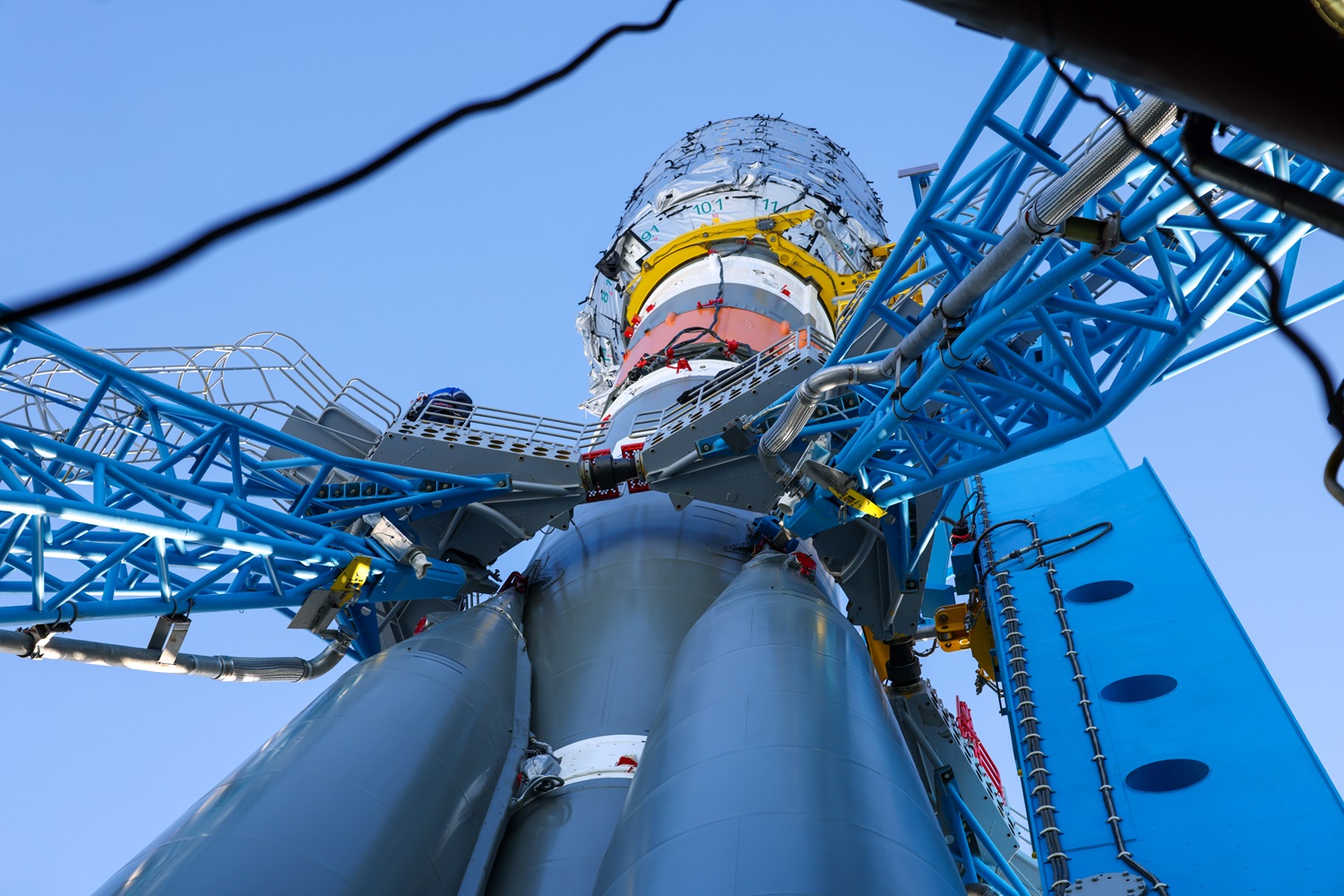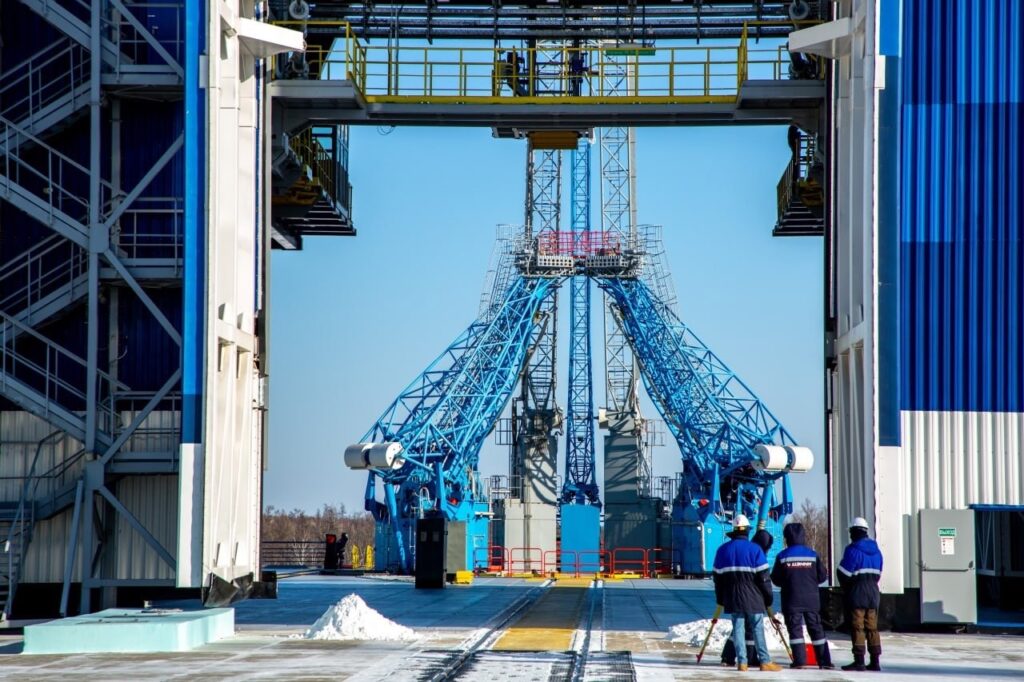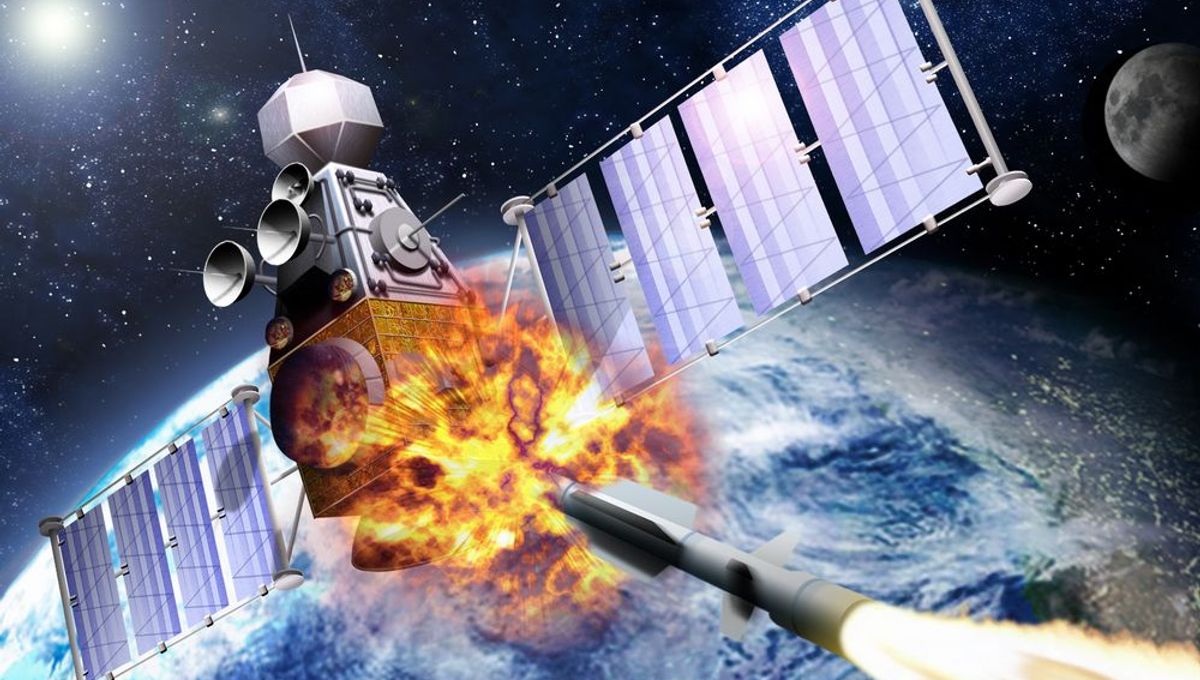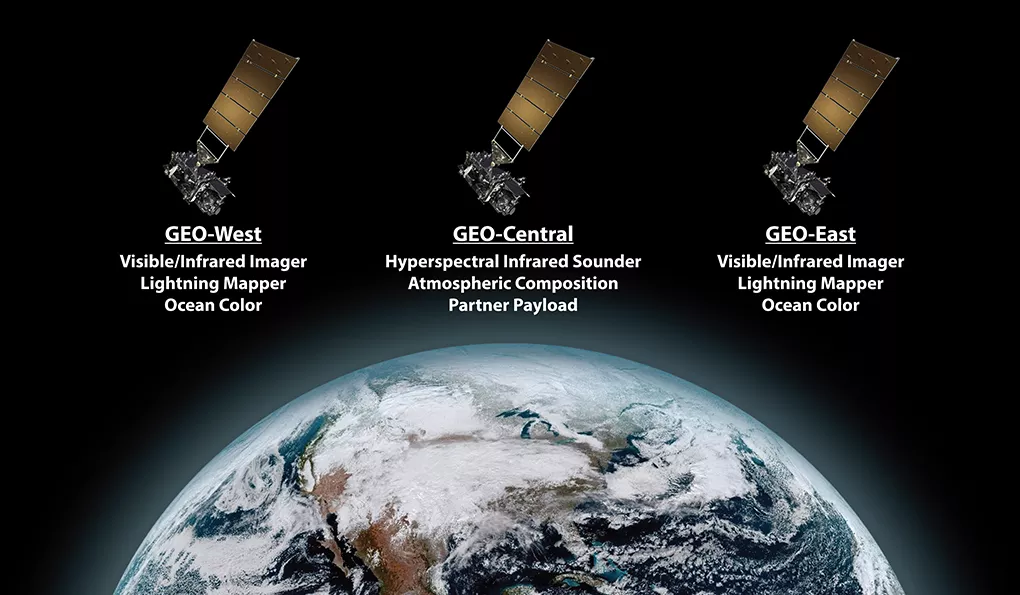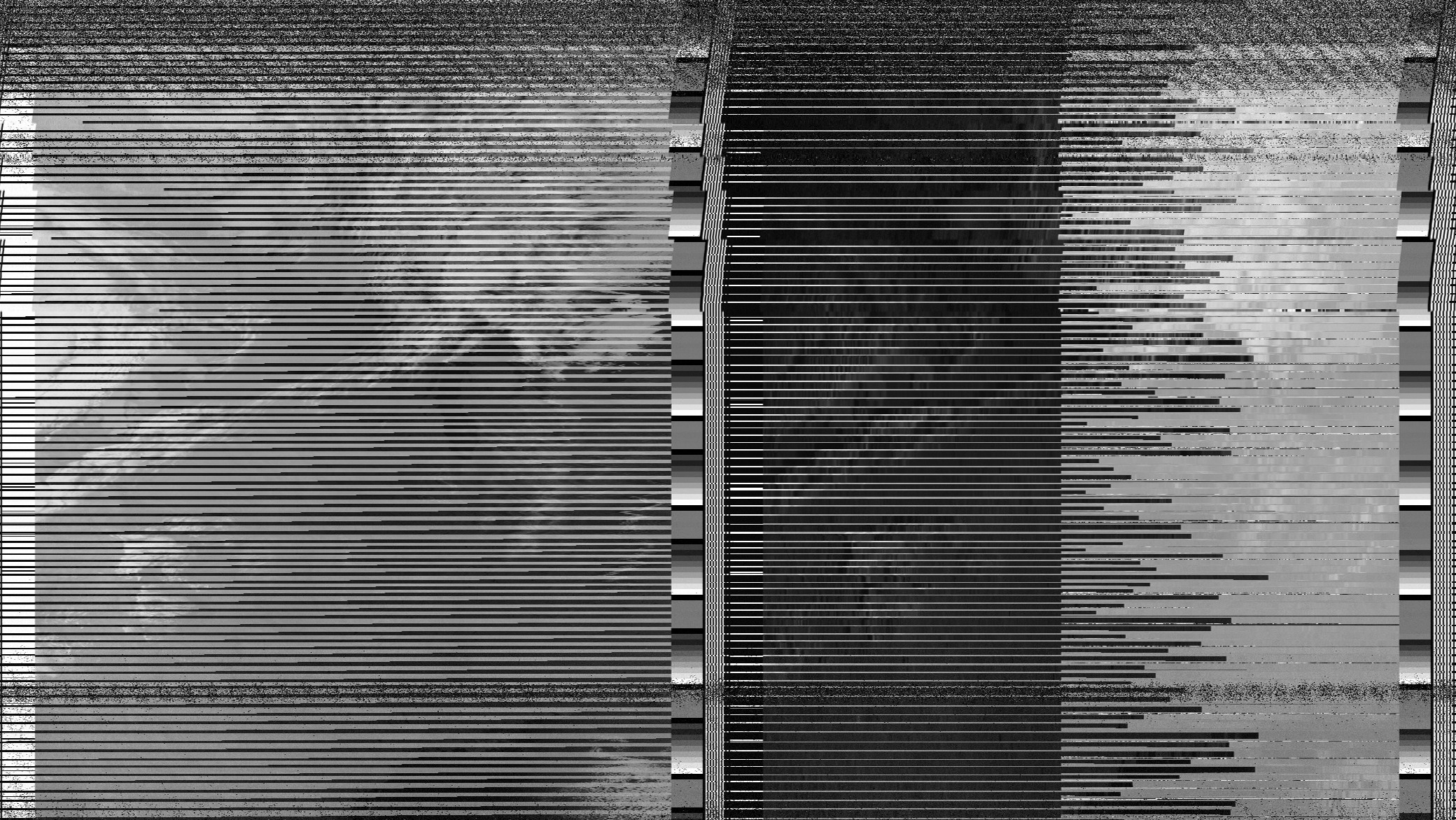![]()
METEOR M2-4 Launched on February 29th 2024!
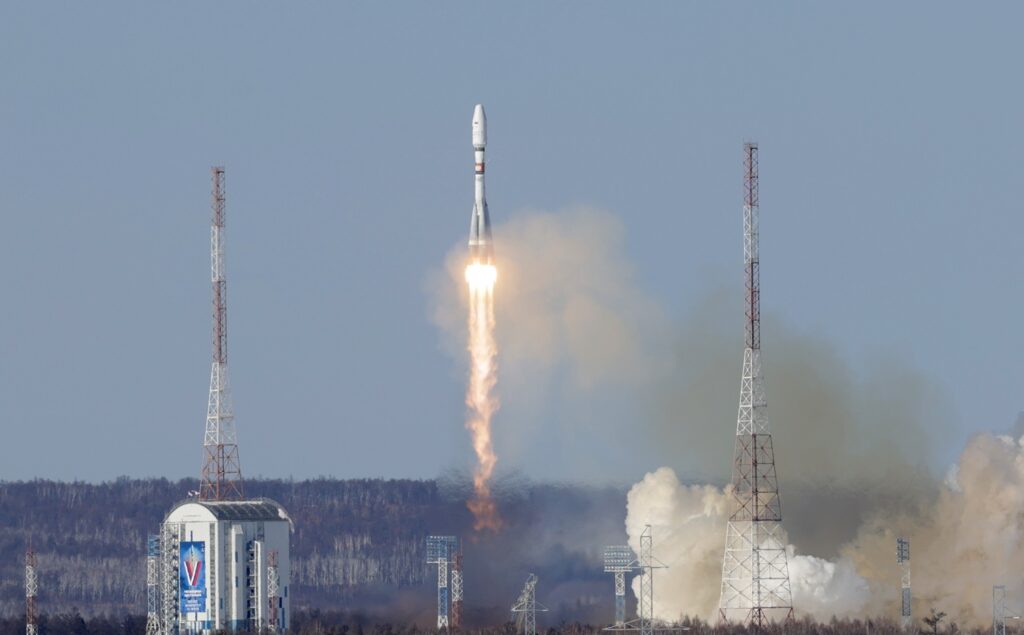
Update Feb 27, 2024- Soyuz-2.1b Rocket Assembled, Ready for Meteorological Mission
Vostochny Cosmodrome, Russia – February 26, 2024: Engineers at Roscosmos have completed the assembly of a Soyuz-2.1b rocket tasked with launching the Meteor-M No. 2-4 hydrometeorological satellite and 18 smaller satellites.
The rocket was authorized for transport and installation at launch complex 1C today, with liftoff scheduled for February 29th at 8:43 AM Moscow time.
Mission Details:
- Launch Vehicle: Soyuz-2.1b with Fregat upper stage (manufactured by Progress Rocket and Space Center and NPO Lavochkin, respectively)
- Payload:
- Meteor-M No. 2-4 satellite (built by VNIIEM Corporation)
- 18 Russian and foreign small satellites
- Mission Objectives:
- Enhance hydrometeorological support
- Monitor climate and environment
- Study Earth’s resources
- Monitor near-Earth space weather
- Collect data from automatic platforms
- Relay signals from emergency beacons (COSPAS-SARSAT system)
Special Features:
- Meteor-M No. 2-4 features an advanced radar complex with an active phased array antenna, enabling all-weather monitoring of the Northern Sea Route.
- The satellite also carries heliogeophysical instruments for expanded data collection.
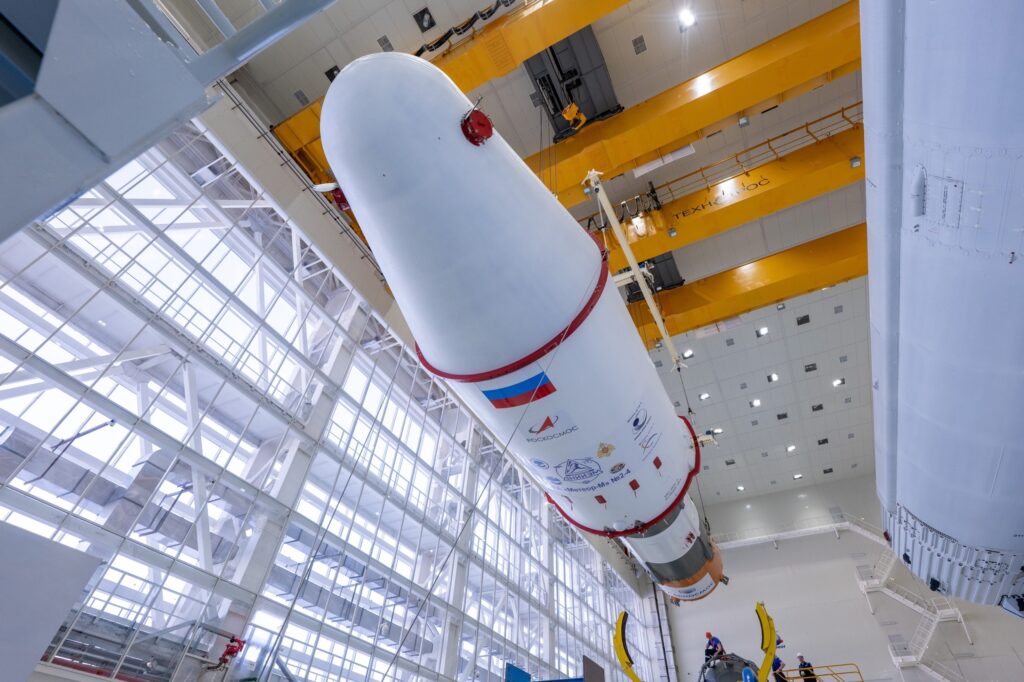
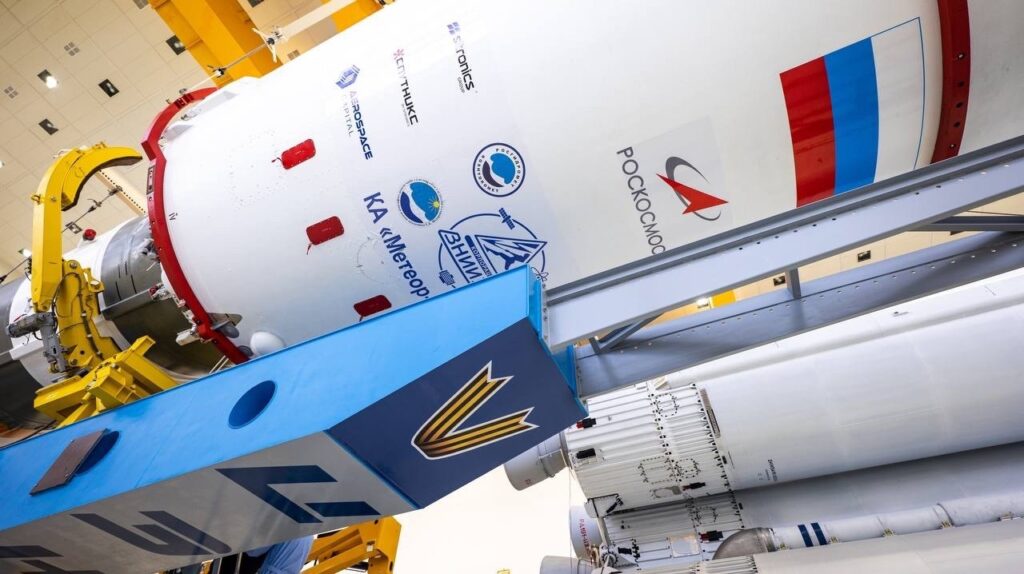
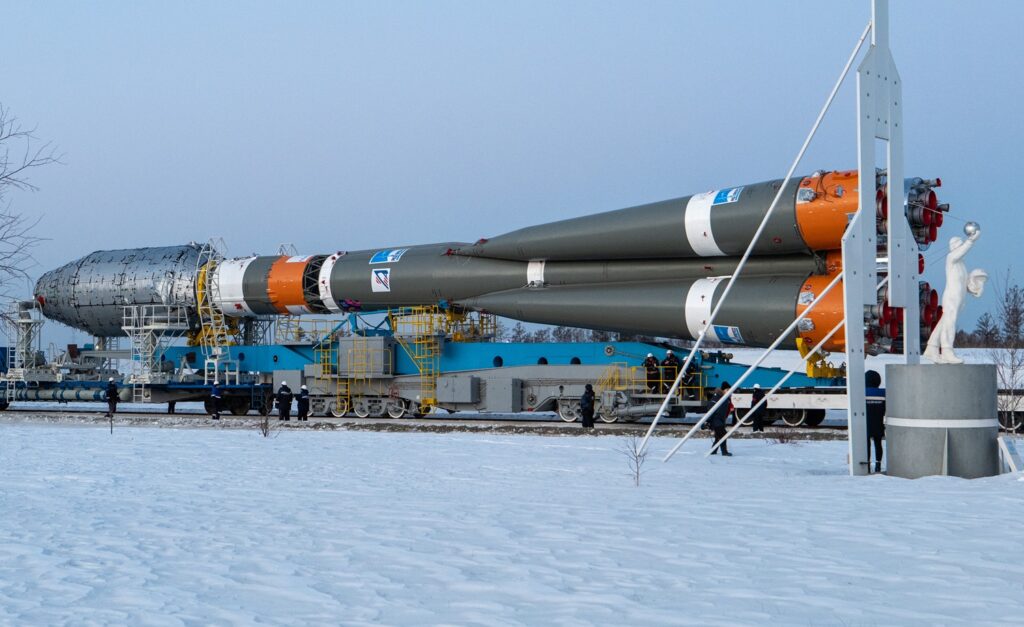
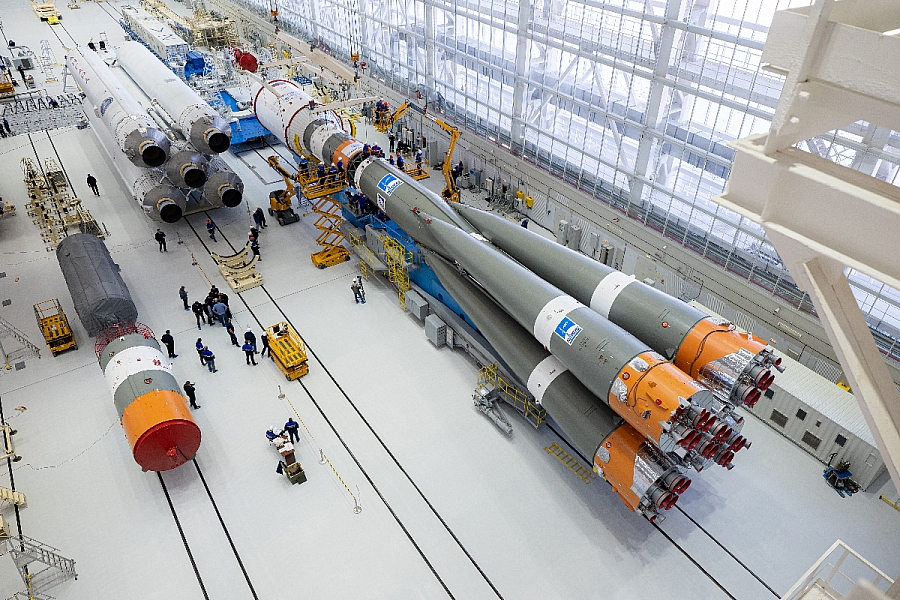
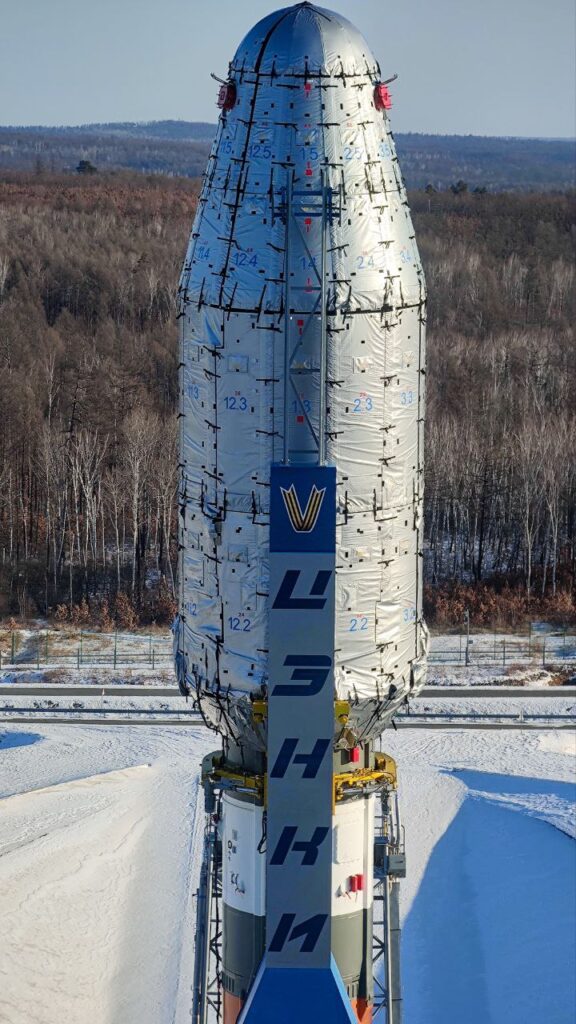
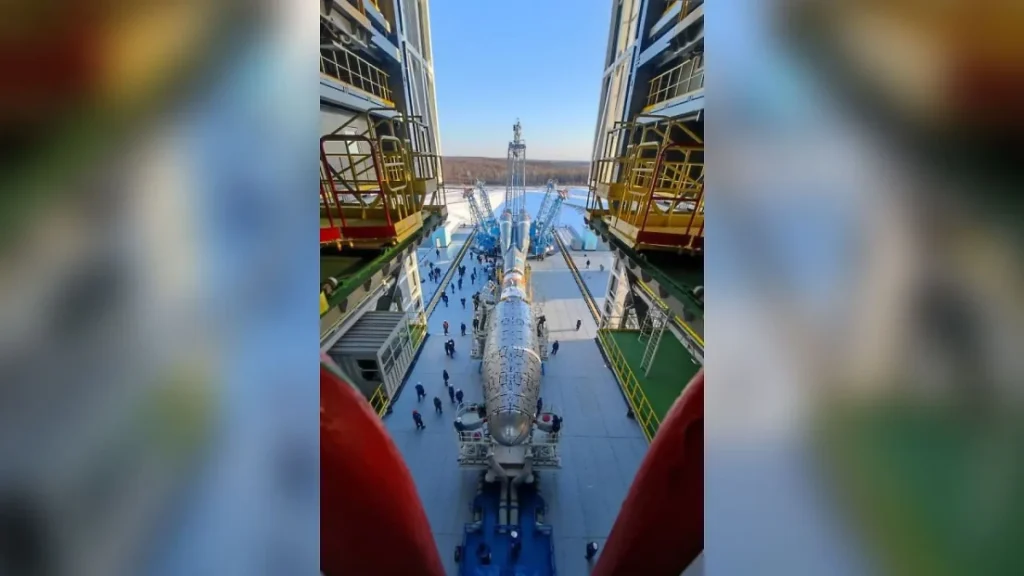
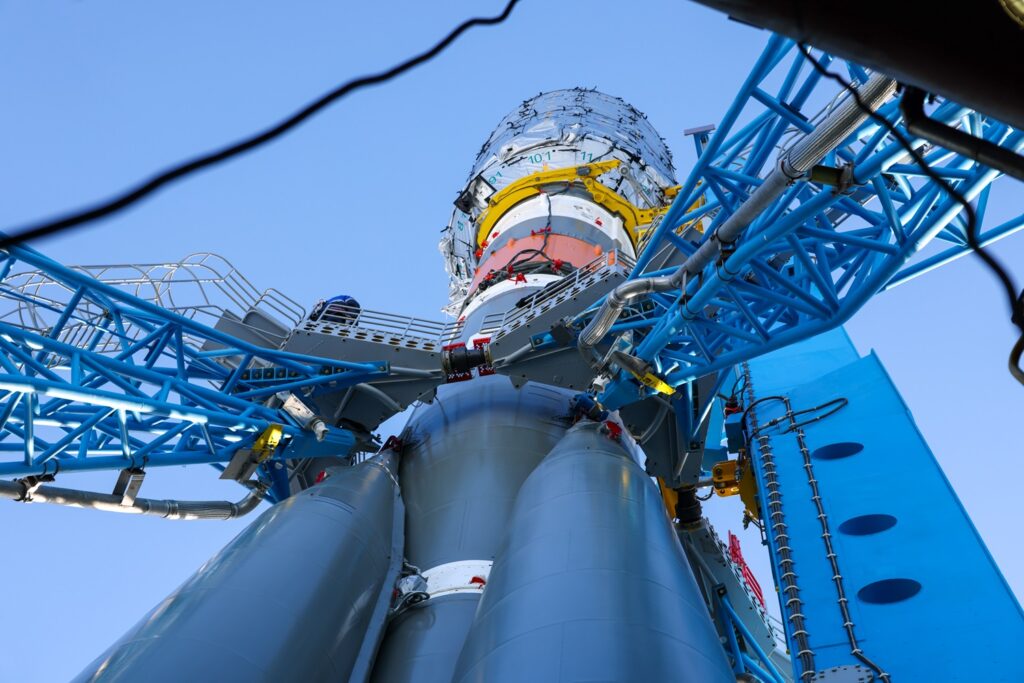
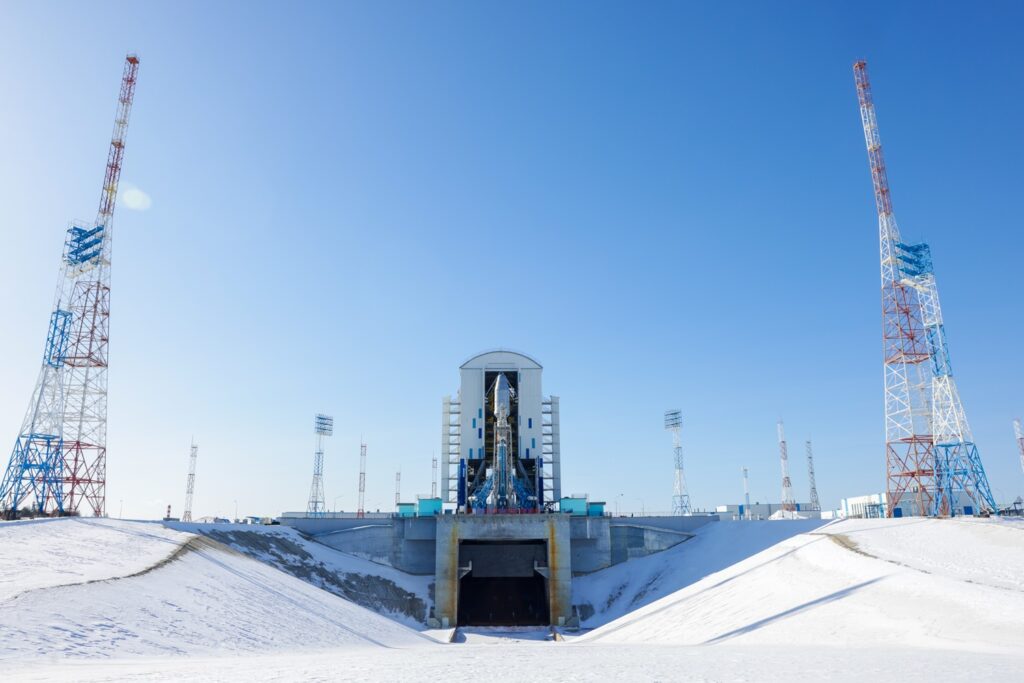
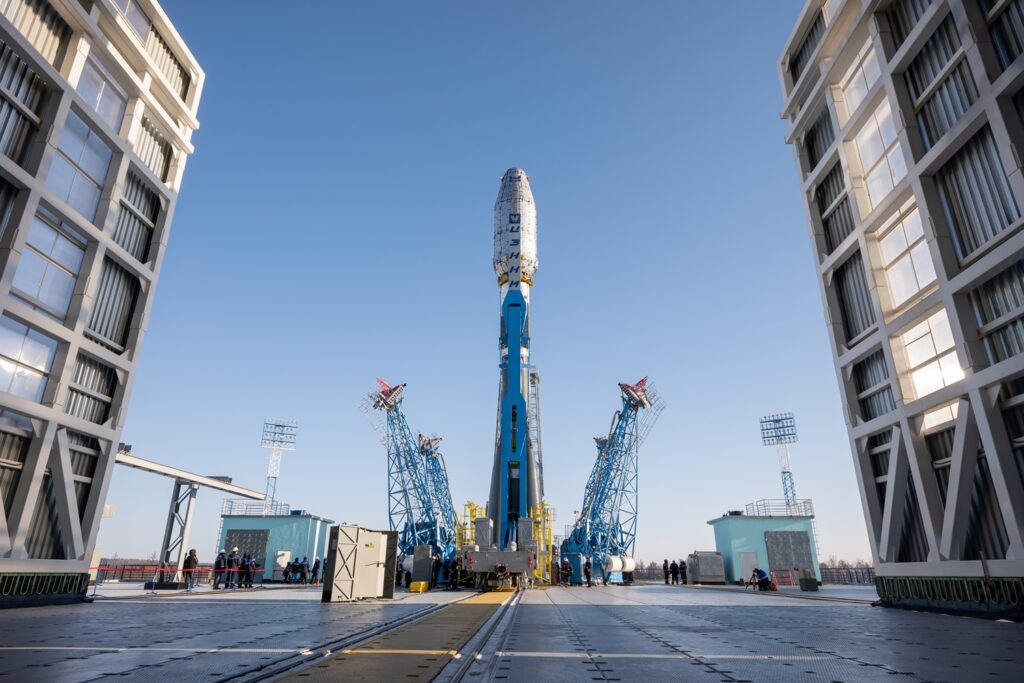
Photos from Roscosmos Vostochny Space Center
| Launch Information | Details | |||
|---|---|---|---|---|
| Liftoff Time (UTC) | February 29, 2024 – 05:43 | |||
| Liftoff Time (MSK) | February 29, 2024 – 08:43 | |||
| Mission Name | Meteor-M 2-4 and others | |||
| Launch Provider | Roscosmos | |||
| Customer | Roscosmos | |||
| Rocket | Soyuz 2.1b with a Fregat-M upper stage | |||
| Launch Location | Site 1S, Vostochny Cosmodrome, Amur Oblast, Russia | |||
| Payload Mass | ~2,750 kg (~6,100 lb) for the Meteor-M 2-4 satellite | |||
| Orbit | Circular Sun-synchronous orbit (SSO) at 820 km (~510 mi) and 98.57 degrees inclination | |||
| First Stage Recovery | No, not recoverable by Soyuz | |||
| First Stage Landing | Zaysky District, Amur Oblast, Russia (expected crash site)Map of Region | |||
| Fairing Recovery | No, not recoverable by Soyuz | |||
| Fairings New | Yes |
- IKFS-2 – advanced IR sounder for atmospheric temperature and humidity profiles (not on Meteor-M No. 1)
- KMSS – multi-channel scanning unit for Earth surface monitoring
- MSU-MR – low-resolution multispectral scanner for global and regional cloud cover mapping
- MTVZA-GY – imager/sounder for atmospheric temperature and humidity profiles, sea surface wind
- SSPD – data collection and transmission system (not on Meteor-M No. 2-3)
- IKOR-M – broadband radiometer sensing outgoing short-wave signals (not on Meteor-M No. 2-3)
- GGAK-M/RIMS-M – mass spectrometer utilizing radio-frequency to identify human influences in the ionosphere and the upper atmosphere
- GGAK-E/SKIF-6 – spectrometer to detect corpuscular radiation that aims at probing incoming solar radiation
- GGAK-E/GALS-E – cosmic rays detector studying this kind of radiation arriving to our planet
- Severjanin-M – synthetic aperture radar operating in the X-band, purposed for all-weather land observation (not on Meteor-M No. 2-4)
- MeteoSAR – another synthetic aperture X-band radar that will perform all-weather observations of land, oceans, and also ice (only on Meteor-M No. 2-4)
Vostochny Cosmodrome, Russia (February 12, 2024)
Launch preparations underway for Meteor-M No. 2-4 at Vostochny Cosmodrome
The ground crew at the Launch Complex in Vostochny Cosmodrome is busy getting ready for the upcoming launch of the Soyuz-2.1b rocket carrying the Meteor-M No. 2-4 satellite and its associated payload. Here’s what they’re up to:
- System checks: Making sure all the systems and equipment are in good working order.
- Tower retraction: Moving the mobile service tower away from the rocket in preparation for launch.
- Fuel prep: Receiving, storing, and preparing the rocket’s fuel components and compressed gases.
The launch is scheduled for the end of February. Most likely the 29th.
Vostochny Cosmodrome, Russia (January 20, 2024)
Russia’s Newest Weather Eye To Take Flight: Meteor-M No. 2-4 Launches Feb 29th at 8:43 Moscow time (5:43 UTC).
“Meteor-M No. 2-4 will be the only vehicle of this series that will be launched into orbit in 2024.”
RIA Novosti
Hold onto your butts! The spokesperson for the Press service of Roscosmos just announced that: Meteor-M No. 2-4, Russia’s next-generation weather satellite, will rocket off on February 29th. Liftoff from the Vostochny Cosmodrome aboard a Soyuz-2.1b rocket is scheduled for 8:43 Moscow time (5:43 UTC).
This isn’t just a single satellite show. Meteor-M No. 2-4 will be joined by a crew of miniature marvels (Marafon-D №11L, TUSUR-GO, Vizard-ion, Gorizont, Colibri-s, RTU MIREA1, multiple small sats): CubeSats built by universities, businesses, and even an international partner.
Remember those earlier whispers about a late 2023 launch? Turns out, Meteor-M No. 2-4 prefers the grand entrance of a leap year! However, earlier reports of Meteor-M No. 2-5 and 2-6, launching in 2024 and 2025 have been delayed and hopefully will have their turn in 2025 and 2026, if VNIIEM Corp. gets them finished! Paving the way for the even more advanced Meteor-MP series.
So, mark your calendars (in PENCIL, and have an eraser close by! As these launches often get changed!!!) for February 29th!
Key Points:
- Launch date: February 29, 2024, at 8:43 Moscow time (5:43 UTC).
- Launch location: Vostochny Cosmodrome.
- Launch vehicle: Soyuz-2.1b rocket.
- Primary payload: Meteor-M No. 2-4 hydrometeorological satellite.
- Secondary payloads:
- CubeSat satellites from Russian universities, commercial companies, and non-profit organizations.
- Previous news: The satellite and associated devices were delivered to the cosmodrome on December 28, 2023. Fueling began on the Fregat Upper Stage on January 16th.
This launch is significant for several reasons:
- It’s the first launch from the Vostochny Cosmodrome in 2024.
- Meteor-M No. 2-4 is the only satellite in its series scheduled for launch this year.
- The launch includes several CubeSats, demonstrating the growing interest in this type of small satellite.
Back in March of 2023 the Roscosmos State corporation issued a statement to reporters that due to technology sanctions by the countries around the globe:
“The Roscosmos State Corporation will pay greater attention to development of the orbit group of meteorological purpose in evolved conditions because of the risk of possible disconnection of Russia from data from the US and European weather satellites,”
Roscosmos state corporation press service
Vostochny Cosmodrome, Russia (January 16, 2023)
Preparations are underway to launch the Meteor-M hydrometeorological satellite No. 2-4.
Here’s what’s happening:
- Fueling the Fregat upper stage: This stage will propel the satellite into orbit. Specialists are preparing the stage and its systems to be filled with special fuels and gases.
- Moving the stage: The Fregat stage was carefully loaded onto a cart and transported to a special hall for refueling.
- Launch scheduled for early 2024: The Soyuz-2.1b rocket carrying the Meteor-M satellite and additional cargo is expected to lift off from Vostochny sometime in the first three months of this year. This statement is a change from earlier discussions.
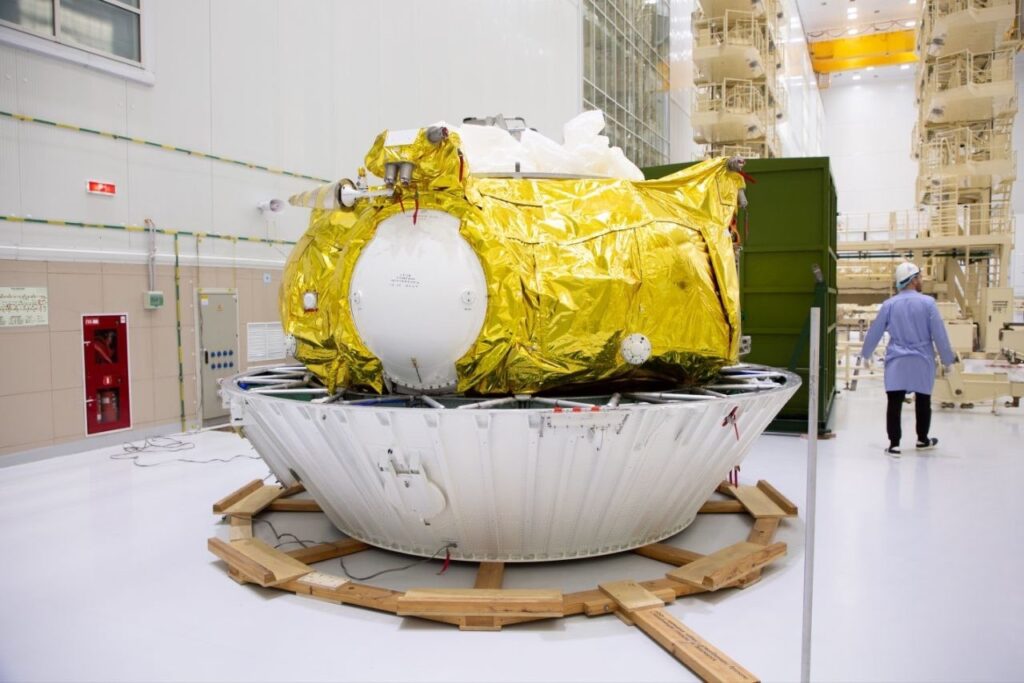
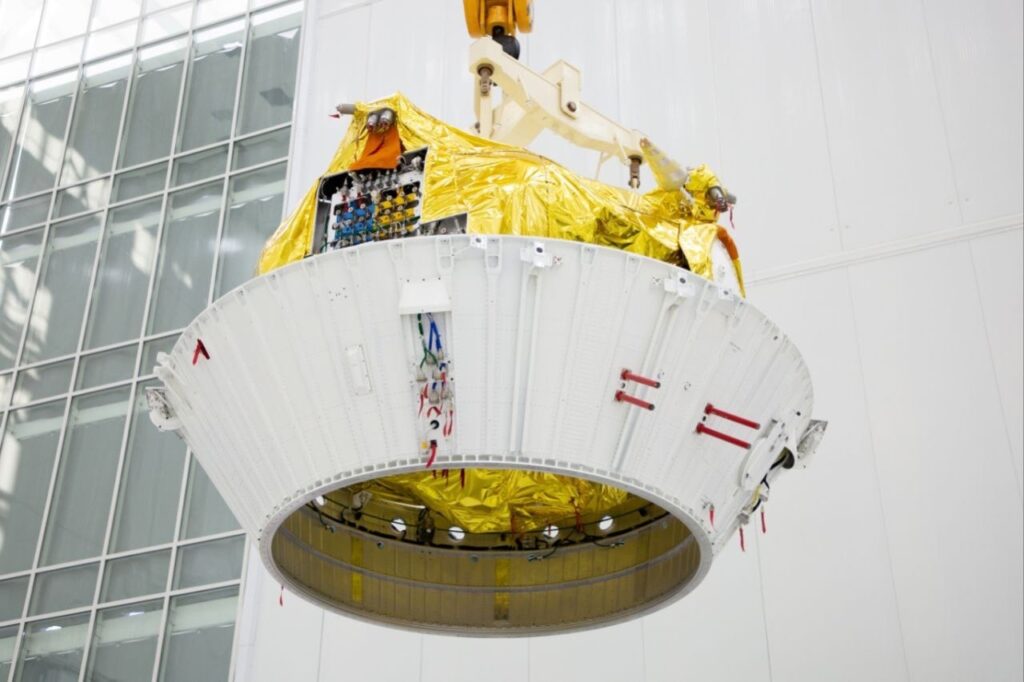
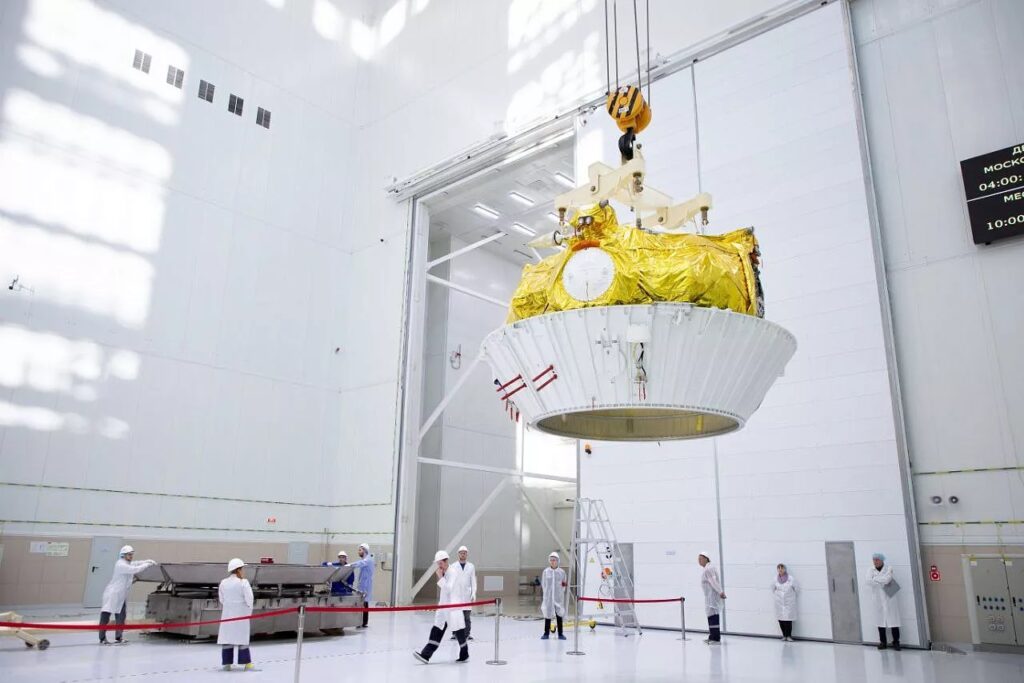
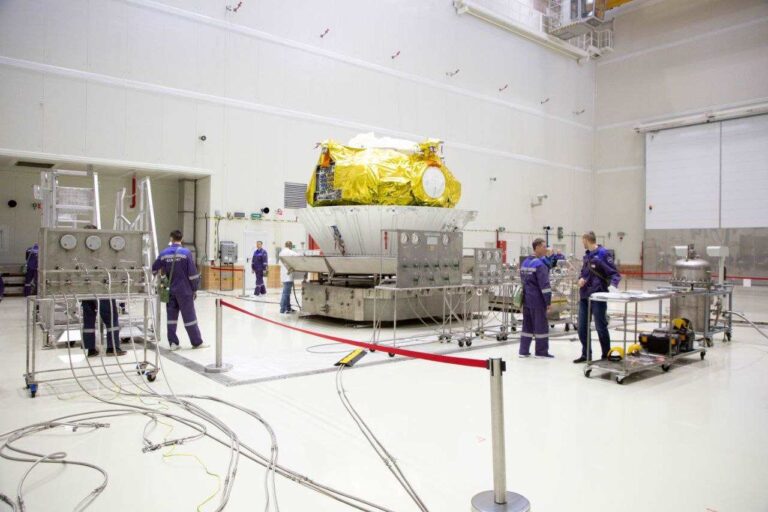
Vostochny Cosmodrome, Russia (December 28, 2023) – The VNIIEM Corporation, a subsidiary of the Roscosmos State Corporation, has delivered the Hydrometeorological spacecraft “Meteor-M” No. 2-4 to the Vostochny Cosmodrome in preparation for its launch February 29th of 2024.
This sixth satellite in the Meteor-M series promises a significant leap forward in Earth observation and environmental monitoring. Its capabilities reach far beyond traditional weather forecasting, encompassing:
- Hydrometeorological support: Providing high-resolution data on weather patterns, precipitation, and ocean conditions.
- Climate and environmental monitoring: Tracking changes in global climate, land use, and environmental health.
- Heliogeophysical situation control: Monitoring near-Earth space for potentially disruptive solar activity and space weather events.
- Data collection: Receiving information from ground-based stations and buoys via the COSPAS-SARSAT international search and rescue system.
Enhanced capabilities for a wider view:
Meteor-M No. 2-4 boasts several cutting-edge features:
- Advanced radar complex: An active phased array antenna enables all-weather radar monitoring of the Northern Sea Route, a crucial shipping lane in the Arctic.
- Heliogeophysical instruments: A short-wave reflected radiation meter and a radio-frequency mass spectrometer expand the range of monitored solar and space weather parameters.
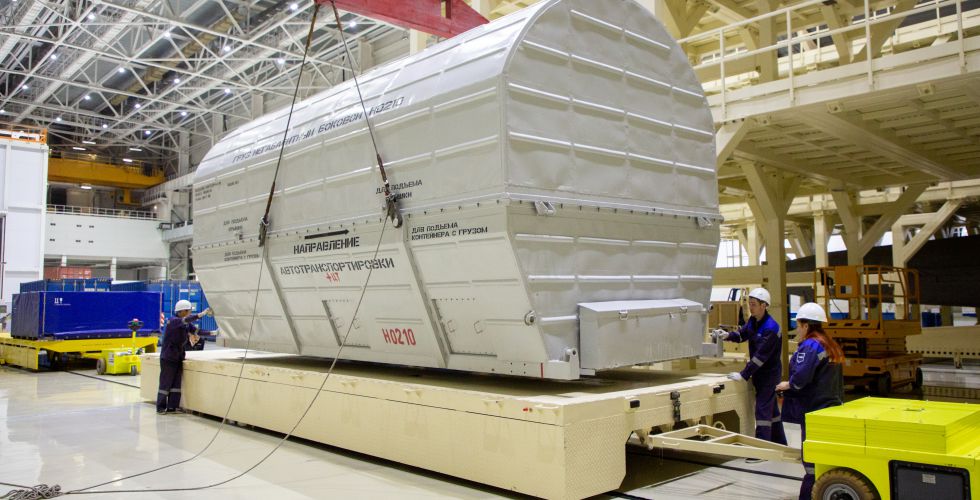
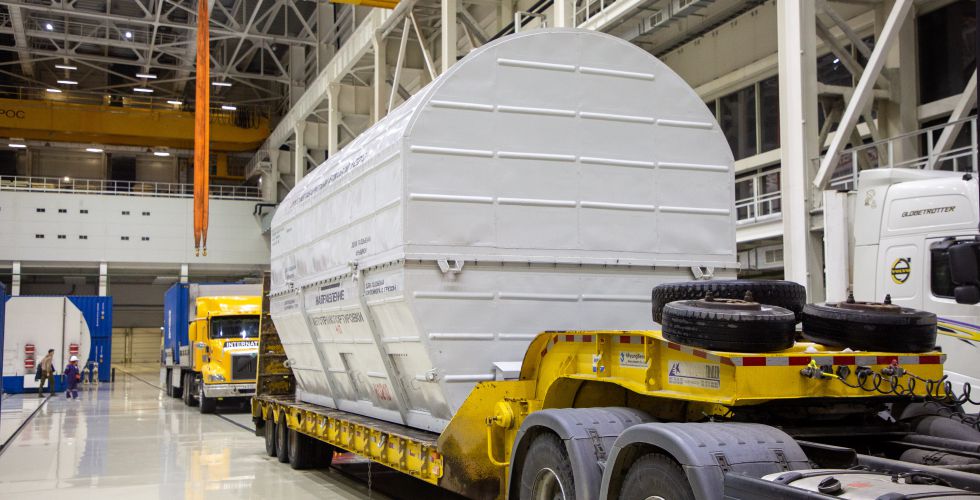
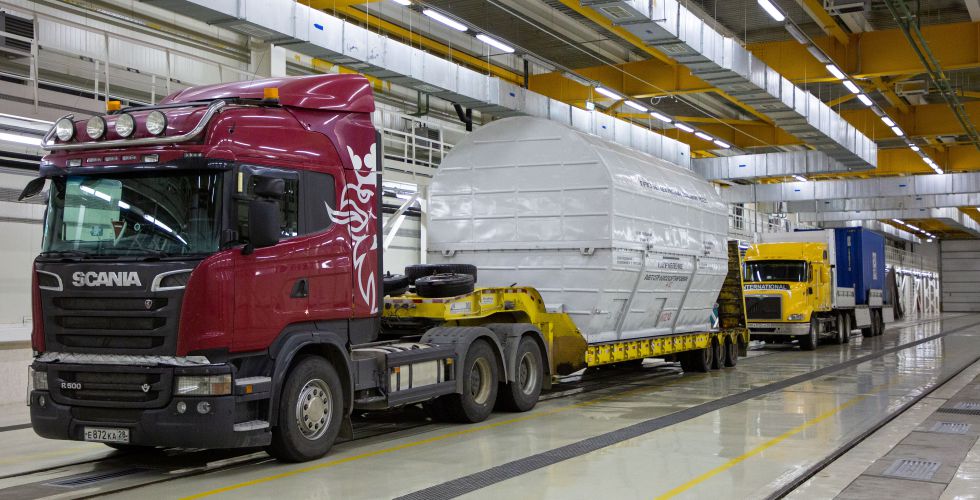
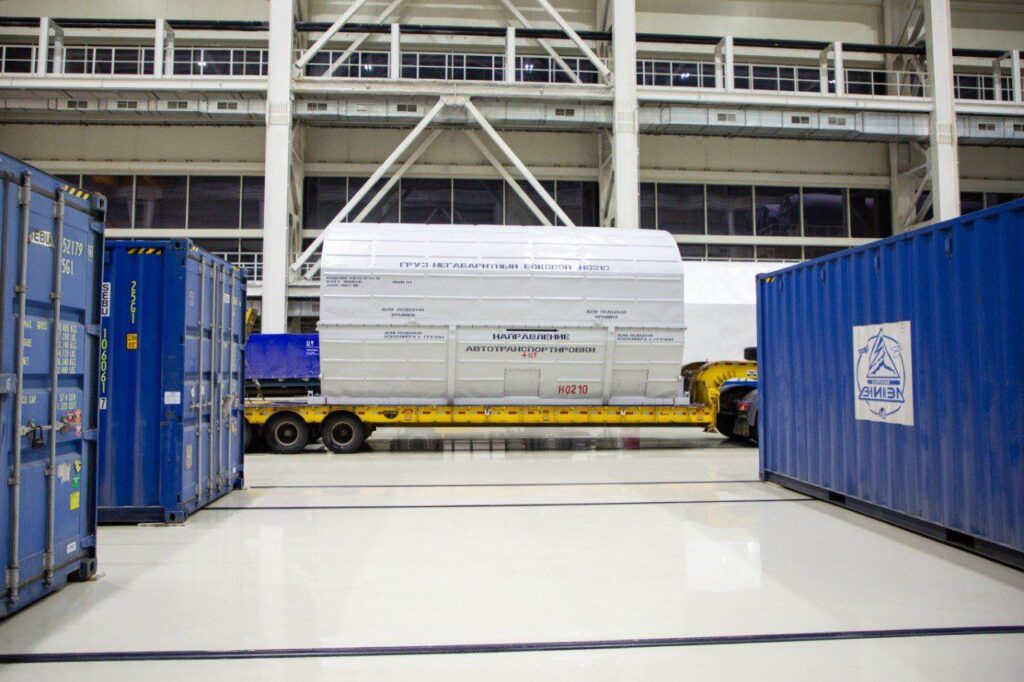
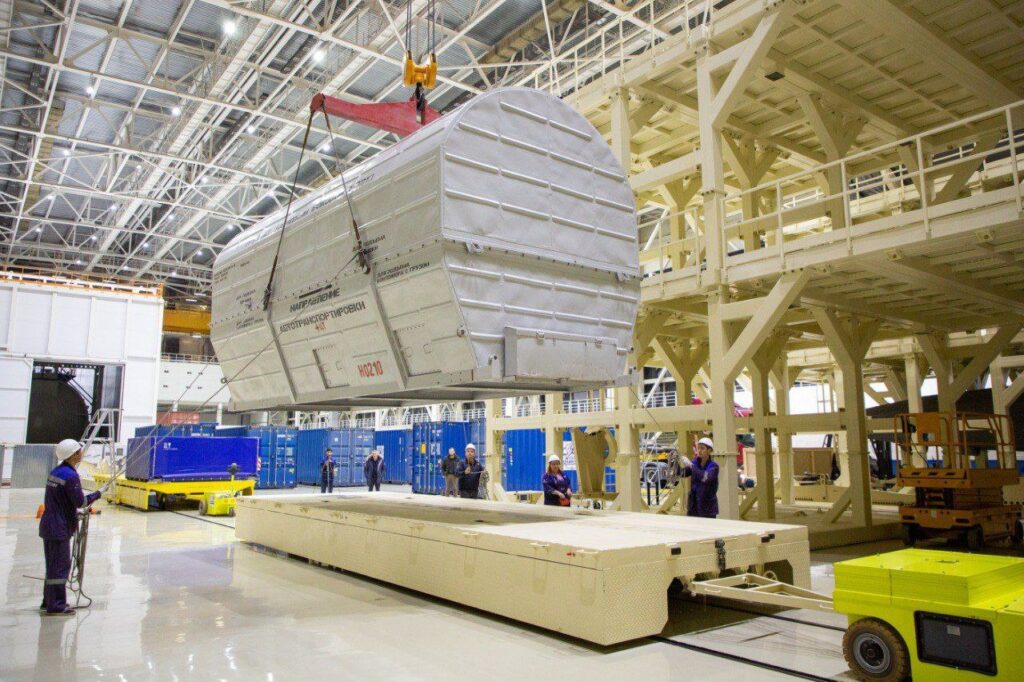
Preparing for liftoff:
At the Vostochny Cosmodrome, VNIIEM specialists will meticulously prepare the spacecraft for its launch aboard a Soyuz-2.1b rocket with the Fregat upper stage.
(Роскосмос Метеоре-М № 2-4) set to launch February 29th of 2024 UTC Time 05:43:xx.xxx) – Meteor-M №2-4, multiple small satellites as additional payloads
UPDATED 11-20-2023
A few of the ride-along small sats Marafon-D №11L, TUSUR-GO, Vizard-ion, Gorizont, Colibri-s, RTU MIREA1.
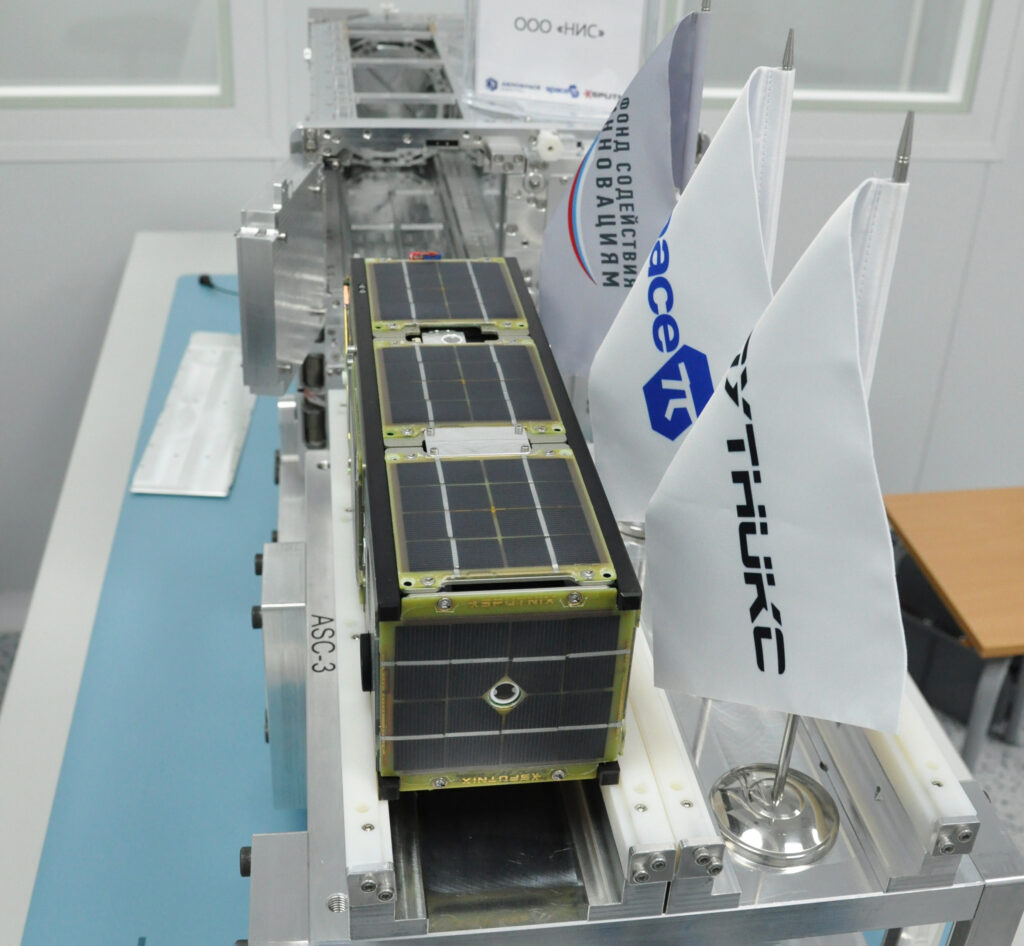
11/17/2023
The list of Russian Soyuz Launches now shows Meteor M2-4
(Роскосмос Метеоре-М № 2-4) set to launch February 29nd of 2024 UTC Time 05:43:xx.xxx) – Meteor-M №2-4, multiple small satellites as additional payloads – Soyuz-2-1B/Fregat-M (15000/142-03) – Vostochniy, 1S.
CURRENT LAUNCH PROJECTION (Subject to change!)
February 29 2024
Launch Vehicle • Soyuz-2-1B/Fregat-M
Launch Site • Vostochny, Cosmodrome Site 1S
Launch Window • 05:43 UTC
Hydrometeorological satellite “Meteor-M” No. 2-4 is planned to be launched at the end of the year, said Ildar, General Director of the Scientific and Production Corporation “Space Monitoring Systems, Information, Control and Electromechanical Complexes” named after A. G. Iosifyan (VNIIEM, part of Roscosmos) Khalilyulin.
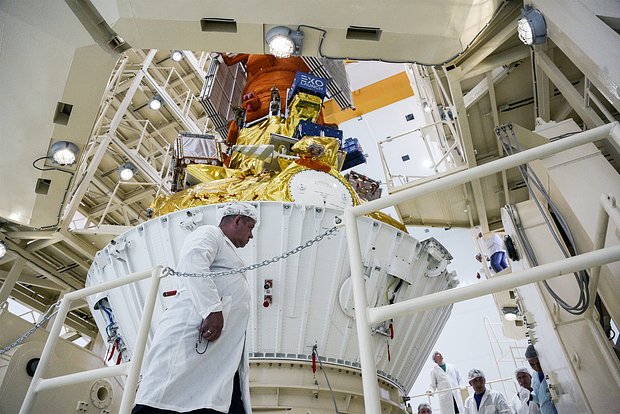
The Soyuz-2.1b will soon launch from the cosmodrome in the Amur Region with the Meteor-M hydrometeorological satellite No. 2-4 and a payload of other small spacecraft. It will launch from Cosmodrome Site 1S at the Vostochny Cosmodrome, Siberia, Russian Federation
The Fregat upper stage is a universal upper stage that is designed to launch spacecraft into various orbits. It is used as part of various types of launch vehicles, including Soyuz-type launch vehicles. The Fregat upper stage was designed and produced by the Scientific and Production Agency named after S.A. Lavochkin.
The Meteor-M 2-4 spacecraft is a weather satellite that is designed to provide global observations of the Earth’s atmosphere and oceans. The spacecraft is equipped with a variety of instruments that can be used to monitor weather patterns, climate change, and other environmental phenomena. In addition to the MSU-MR Sensor package, it will, like M2-3 have aboard it the KMSS (Multispectral Scanning Imaging System).
The instrument comprises three cameras in the VNIR range; two cameras (MSU-100) have a focal length of 100 mm; the third one (MSU-50), has a focal length of 50 mm. The two MSU-100 cameras are tilted ±14º in cross-track to each side of the nadir; together they cover a swath width of 960 km, which is close to the swath of MSU-50.
Each camera has a focal plane with 3 CCD lines (each covered with a corresponding filter) behind a common lens. The three-line camera system (with 3 CCD-lines in a focal plane and 1 lens, the corresponding detector elements of different bands look necessarily in different along-track directions) provides the following along-track observation directions: ±17º and 0º (nadir) for MSU-50, and ±8.7º and 0º for MSU-100. The KMSS instrument represents simply the mounting fixture of three separate cameras, and the KMSS image will be an image of 3 separate cameras put together in ground processing.
MTVZA-GY (Microwave Imaging/Sounding Microwave Radiometer) will also be onboard The objective of the MTVZA-GY instrument is to monitor ocean and land surfaces as well as global atmospheric parameters such as temperature and water vapor profiles and to obtain sea surface wind profiles. MTVZA-GY is a conical scanning instrument with a common field of view for imaging and sounding channels (simultaneous multispectral and polarization measurements), due to the single antenna design.
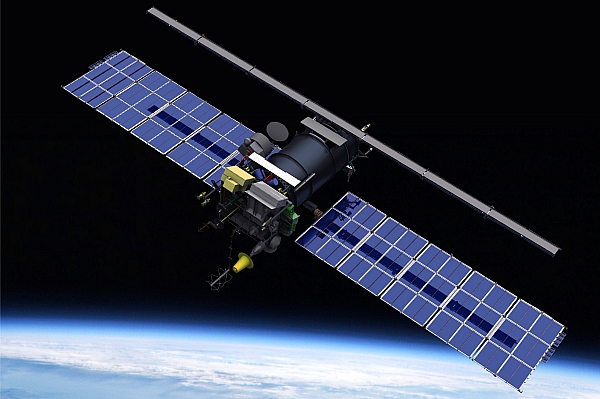
Meteor M2-4 is a clone of Meteor M2-3 and as such it can be expected to function on 137.1 and 137.9 MHz for LRPT and 1.7GHz for HRPT. As of 2023 Meteor M2-5 and Meteor M2-6 were in production at VNIIEM Corporation. The launch of the sea-monitoring Meteor-M No. 3, which was custom-designed to observe oceans with a high-resolution phased-array radar, has been pushed beyond 2025 due to a lack of funding.
December 16: A Soyuz-2.1b rocket to launch the 2,100-kilogram Arktika-M No. 2 remote-sensing satellite into a highly elliptical orbit. This is a priority satellite for Russian Weather Observation as the Meteor Satellites do not do a very good job of weather monitoring over the important Arctic regions.

